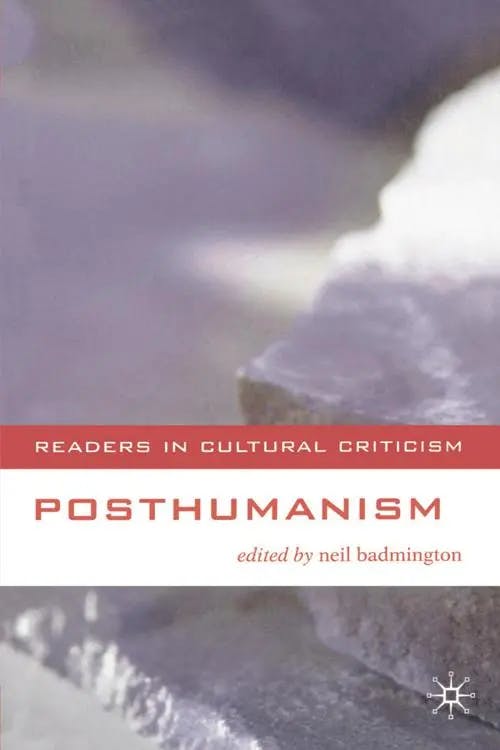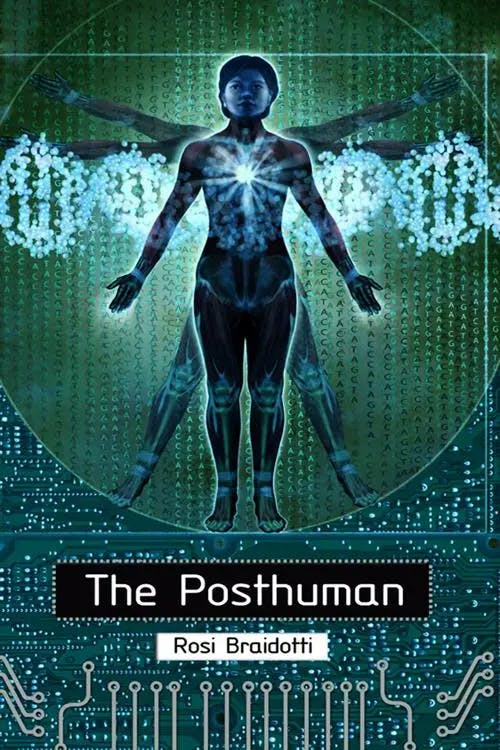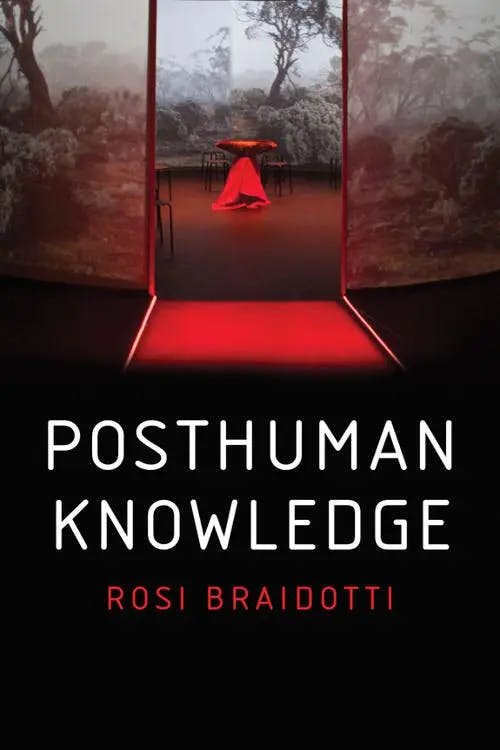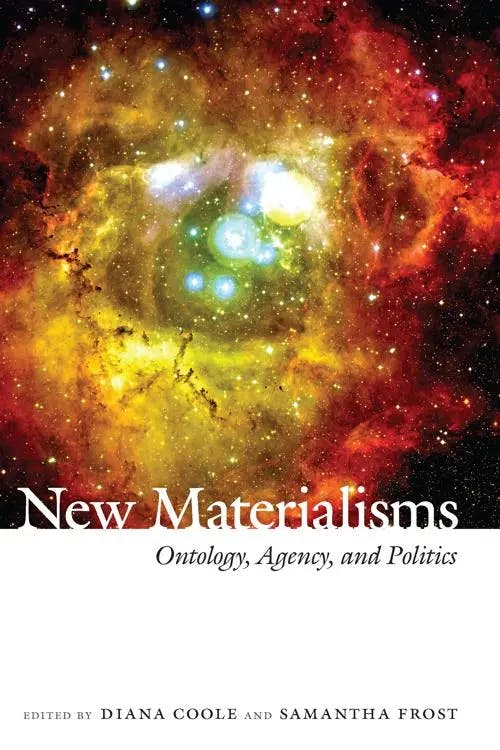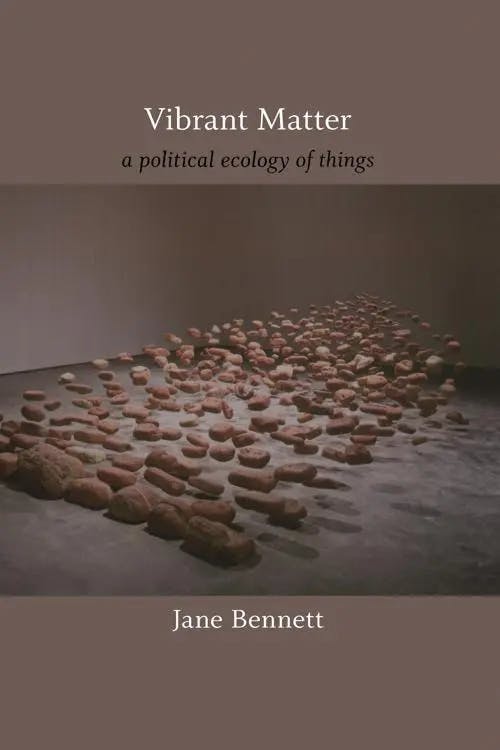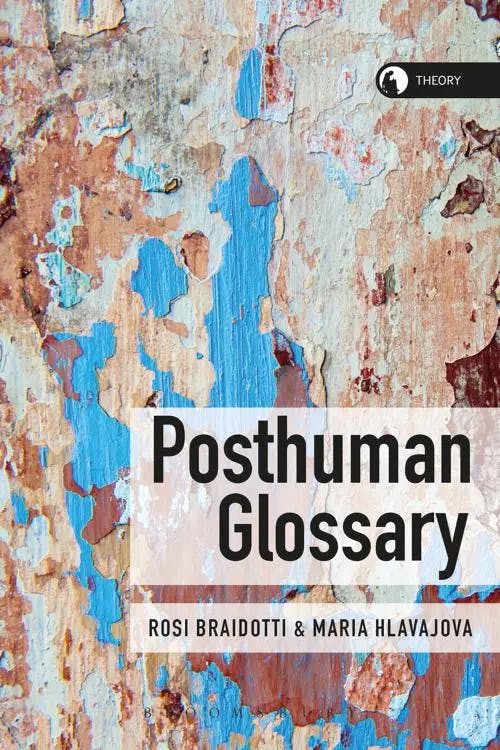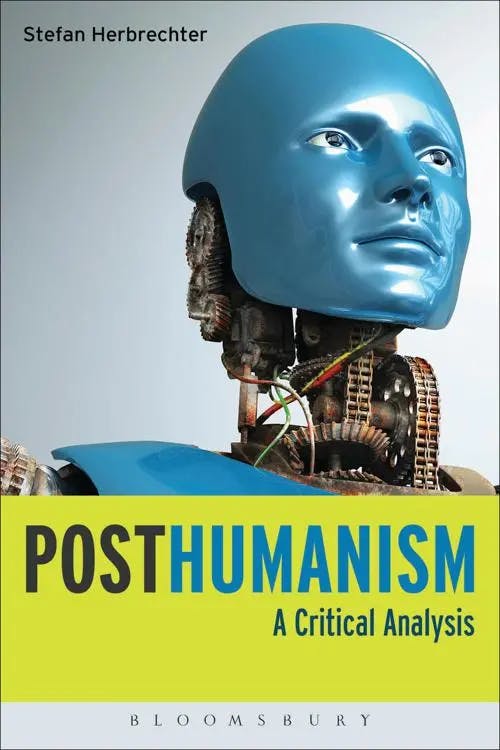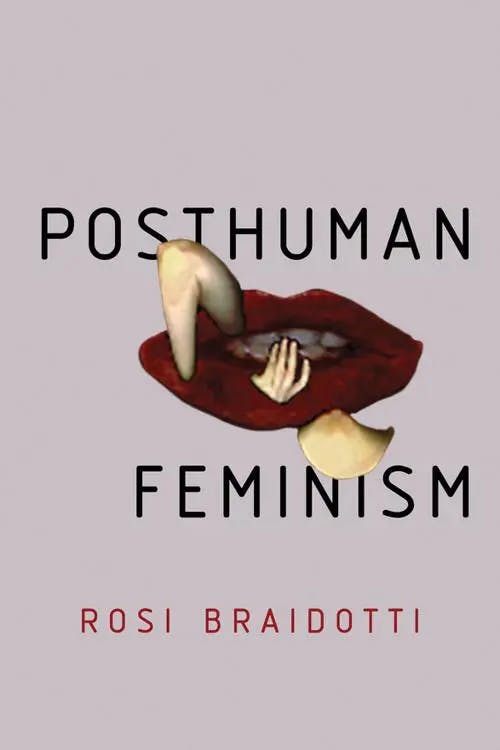What is Posthumanism?
MSt, Women's, Gender & Sexuality Studies (University of Oxford)
Date Published: 08.03.2023,
Last Updated: 16.07.2024
Share this article
Where does Posthumanism come from?
As the name implies, posthumanism aims to push against or move beyond humanism, a worldview which took hold in the late 18th and early 19th centuries. Humanism emerged from the Enlightenment’s break with entirely religious and/or magical explanations of the universe, bolstered by a new vision of the future. Rather than accepting time as cyclical or predetermined with a fixed endpoint (the apocalypse in Christian theology), people began imagining the future as open, or at least subject to human influence.
In The Bloomsbury Handbook of Posthumanism, Hans Ulrich Gumbrecht writes that this view of the future became, “the epistemological ground for a new, democratic conception of politics, based on equality […] and on agency over the future” (2020) — that is, humanism. Humanism privileged the perspective and power of Man, championing individual rights, agency, and self-determination. Humanists called for a process of continual self-improvement and believed that Man could eventually gain complete knowledge of the world. Humans became the subject and object of study in the developing disciplines, the “Humanities.”
For Neil Badmington, the philosophies of René Descartes are exemplary of humanism. Badmington summarizes Descartes’ perspective in his book on Posthumanism:
There is […] an absolute difference between the human and the inhuman: only the former has the capacity for rational thought. Reason belongs solely to the human and, as such, serves to unite the human race. ‘We’ may have different types of bodies, but because reason is a property of the mind (which, for Descartes, is distinguishable from the body), deep down ‘we’ are all the same. (2000)
Neil Badmington
There is […] an absolute difference between the human and the inhuman: only the former has the capacity for rational thought. Reason belongs solely to the human and, as such, serves to unite the human race. ‘We’ may have different types of bodies, but because reason is a property of the mind (which, for Descartes, is distinguishable from the body), deep down ‘we’ are all the same. (2000)
Descartian philosophy emphasizes reason as the absolute difference between human and nonhuman and draws a distinction between mind (rational, spiritual, essentially human) and body (unwieldy, wordly, essentially animal). Posthumanism seeks to unsettle these dualisms.
Notions of agency and equality are common in humanist rhetoric, serving as the foundation for many declarations of civil/human rights and historical revolutions. Despite humanism’s equalizing impulse, a glance at history reveals that many were excluded from this vision of unity. The human described by humanism was a specific one: male, white, able-bodied, “Western.” As Rosi Braidotti writes,
Not all of us can say, with any degree of certainty, that we have always been human, or that we are only that. Some of us are not even considered fully human now, let alone at previous moments of Western social, political and scientific history. Not if by ‘human’ we mean that creature familiar to us from the Enlightenment and its legacy. (2013)
Rosi Braidotti
Not all of us can say, with any degree of certainty, that we have always been human, or that we are only that. Some of us are not even considered fully human now, let alone at previous moments of Western social, political and scientific history. Not if by ‘human’ we mean that creature familiar to us from the Enlightenment and its legacy. (2013)
The humanist ‘Man’ simultaneously excludes many and over-universalizes the human experience. It is with these universalizing shortcomings in mind that posthumanism emerges. It seeks to place the (hu)Man back into a more attentively framed network of nonhuman others, whilst recognising the exclusions and injustices that pervade Enlightenment-era Humanist thinking.
Defining posthumanism & the posthuman
Posthumanism rejects the (hu)Man traditionally imagined by humanism, especially its status as separate from or superior to the world around it. Posthumanism is part of a movement in critical theory which grew throughout the past century to decentralize the human, account for the nonhuman, and examine the relationships between humans and nonhumans. Posthumanism does not draw stark distinctions between human, animal, and machine, as Descartian philosophy would have it. Instead, it focuses on how everything is made from the same building blocks of matter, existing within and alongside each other.
For many scholars, the necessity of a posthuman perspective is apparent in our everyday lives. We live in the Anthropocene, “the age of the human,” and climate change reveals the detrimental effects of privileging humans above all else. As natural disasters increase in frequency and extremity, the connections between ourselves and our environment only become more apparent. Posthuman theory, Braidotti writes, is “a generative tool to help us re-think the basic unit of reference for the human in […] the historical moment when the Human has become a geological force capable of affecting all life on this planet” (2013).
Posthumanism argues that the very concept of the human as a discrete and autonomous lifeform is inherently problematic. As Donna Haraway effectively illustrates in When Species Meet,
Human genomes can be found in only about 10 percent of all the cells that occupy the mundane space I call my body; the other 90 percent of the cells are filled with the genomes of bacteria, fungi, protists, and such, some of which play in a symphony necessary to my being alive at all, and some of which are hitching a ride and doing the rest of me, of us, no harm. (2008)
Such science helps dethrone this notion of the human as a bounded or exceptional lifeform; the human is intrinsically tangled up with, and dependent upon, a lively matrix of nonhuman life to sustain itself. Similarly, Darwinian evolutionary theory tells us that we arrive at the human by way of a network of nonhuman transformation. Our coccyx bone is an echo of our primate origins, the webbing on our hands and feet a prescient reminder of our deeper oceanic heritage. In this context the human is by definition always and already posthuman, or more-than-human.
Moreover, as our reliance on technology increases, we find ourselves constantly entangled with the inorganic nonhuman — from pacemakers and prosthetic limbs to social media algorithms and the Metaverse. Posthumanism responds to this entangled world by asking us to interrogate what it means to be human, to pay better attention to the nonhuman, and to consider how the boundaries between human and nonhuman may be more porous than we think.
Recognizing this porosity, Braidotti offers a concise summary of posthumanism in Posthuman Knowledge:
The posthuman is not so much a dystopian vision of the future, but a defining trait of our historical context. I have defined the posthuman condition as the convergence of posthumanism on the one hand and post-anthropocentrism on the other, within an economy of advanced capitalism (Braidotti 2013, 2017). The former focuses on the critique of the Humanist ideal of ‘Man’ as the allegedly universal measure of all things, while the latter criticizes species hierarchy and anthropocentric exceptionalism. (2019)
Rosi Braidotti
The posthuman is not so much a dystopian vision of the future, but a defining trait of our historical context. I have defined the posthuman condition as the convergence of posthumanism on the one hand and post-anthropocentrism on the other, within an economy of advanced capitalism (Braidotti 2013, 2017). The former focuses on the critique of the Humanist ideal of ‘Man’ as the allegedly universal measure of all things, while the latter criticizes species hierarchy and anthropocentric exceptionalism. (2019)
While posthumanism might seem like a modern invention or the latest fad in critical theory, it has origins far before this century. Posthumanist scholars have worked to point out earlier places where posthumanism is relevant and identifiable — classical literature, Renaissance thought, antebellum antislavery writing. Many cultures, particularly indigenous communities, have long produced knowledge systems which recognize the interconnected relationships between humans and nonhumans.
In rejecting humanism, posthumanism also calls into question the academic subjects indebted to humanism: the Humanities. The Humanities are often defined by their study of what makes us human. What future do the humanities have in a posthuman world? Does posthumanism threaten to destroy the disciplines which produced it? Or, can we envision a notion of the “post-humanities,” academic scholarship that embraces posthumanist thought? (For more on the posthumanities, see Posthuman Knowledge and Posthumanism: A Guide for the Perplexed.)
Posthumanism & new materialism
A related movement sharing some of posthumanism’s concerns is new materialism. New materialism responds in part to critical theory’s “linguistic turn” in the second half of the twentieth century — in simplest terms, the belief that all meaning is produced by language/culture. For example, Judith Butler argues that bodies have no inherent sex or gender; meaning is culturally ascribed to them, often through repeated speech acts (see our study guide on Judith Butler’s Theory of Gender Performativity). New materialists aim to disrupt this separation of matter and meaning, along with other dualisms like body–mind and nature–culture.
As Diana Coole and Samantha Frost write in New Materialisms, we live in a profoundly material world, and we ourselves are made of matter:
From our understanding of the boundary between life and death and our everyday work practices to the way we feed ourselves and recreate or procreate, we are finding our environment materially and conceptually reconstituted in ways that pose profound and unprecedented normative questions. In addressing them, we unavoidably find ourselves having to think in new ways about the nature of matter and the matter of nature; about the elements of life, the resilience of the planet, and the distinctiveness of the human. (2010)
Diana Coole, Samantha Frost
From our understanding of the boundary between life and death and our everyday work practices to the way we feed ourselves and recreate or procreate, we are finding our environment materially and conceptually reconstituted in ways that pose profound and unprecedented normative questions. In addressing them, we unavoidably find ourselves having to think in new ways about the nature of matter and the matter of nature; about the elements of life, the resilience of the planet, and the distinctiveness of the human. (2010)
By refocusing on matter, and how different materials interact, new materialism joins with posthumanism in reconsidering what it means to be human. In her new materialist text Vibrant Matter, Jane Bennett explores how all matter, human or not, organic and inorganic, contains thing-power, a level of vitality, force, and agency. Building on Spinoza’s notion of “affective” bodies and Gilles Deleuze and Félix Guattari’s idea of the “assemblage,” Bennett argues that all matter is entangled in complex webs of influence. Rather than endowing humans with exclusive agency, Bennett describes how humans and nonhumans constantly act upon each other. Recognizing the thing-power in all matter, Bennett does not “claim that there are no differences between humans and bones, only that there is no necessity to describe these differences in a way that places humans at the ontological center of the hierarchical apex” (2010). Humans may be particularly complex systems of matter, but we are matter all the same, like bones, trees, dogs, or computers, and not truly distinct from those other forms of matter. As Bennett writes:
One can invoke bacteria colonies in human elbows to show how human subjects are themselves nonhuman, alien, outside, vital materiality. One can note that the human immune system depends on parasitic helminth worms for its proper functioning or cite other instances of our cyborgization to show how human agency is always an assemblage of microbes, animals, plants, metals, chemicals, word-sounds, and the like. (2010)
Jane Bennett
One can invoke bacteria colonies in human elbows to show how human subjects are themselves nonhuman, alien, outside, vital materiality. One can note that the human immune system depends on parasitic helminth worms for its proper functioning or cite other instances of our cyborgization to show how human agency is always an assemblage of microbes, animals, plants, metals, chemicals, word-sounds, and the like. (2010)
New materialists aim to reconsider what it means to be a ‘subject’: if subjectivity is not granted to humans through some kind of exceptional rationality or transcendent soul, can it be recognized as inherent in matter itself?
New materialism and posthumanism both aim to de-exceptionalize the human, asking: How do we understand the ways in which humans and nonhumans become entangled and indistinguishable? How would our understandings of subjectivity and agency — and our ways of living in the world — change if we recognized them in the nonhuman and the nonhuman in us? What might it look like to leave the category of “human” behind?
Posthumanism versus transhumanism
Posthumanism can often be confused with transhumanism, another theoretical perspective like new materialism, which reconsiders the boundaries of the human. Both posthumanism and transhumanism became fully theorized in the late 20th century and both view the human as a dynamic, evolving frame rather than a fixed category. However, the philosophies differ in their goals and currents of scholarship.
Posthumanism critiques anthropocentrism, which places the human at the top of a hierarchy due to some essential difference between humans and nonhumans. Rather than defining the human in contrast to the nonhuman, or granting the human special status, posthumanism views humans as part of interconnected and interdependent relationships with nonhumans. Posthumanist thinkers critique speciesism, or the privileging of the human perspective, and strive to unsettle a strict dualism between human and nonhuman.
In contrast, transhumanism does not reject the humanist approach. In fact, transhumanism focuses on human enhancement through science and technology. As Francesca Ferrando explains in Posthuman Glossary, “In the progressive timeline of the transhuman, the future bears unique potentials: some humans may transcend their actual outfit in such radical ways as to become posthuman (Bostrom 2005a)” (2018). This dual use of the term “posthuman” adds to the confusion of post- and transhumanism. While transhumanism envisions the “posthuman” as a stage after our current transhuman era, Ferrando writes,
according to posthumanism, the posthuman can be seen as a paradigm shift which is already occurring by approaching and performing the human in post-humanist, post-anthropocentric and post-dualistic ways. (2018)
Rosi Braidotti, Maria Hlavajova
according to posthumanism, the posthuman can be seen as a paradigm shift which is already occurring by approaching and performing the human in post-humanist, post-anthropocentric and post-dualistic ways. (2018)
In short, both posthumanists and transhumanists may discuss topics that seem borrowed from science fiction — cyborgs, body modifications, the possibility of transplanting human consciousness into a machine. However, a transhumanist would approach these discussions with an eye toward human enhancement, considering how we might change or leave behind the human body in order to achieve greater longevity or advancement. On the other hand, a posthumanist would use these topics as an opportunity to interrogate the categorical and physical boundaries between the human and the nonhuman. (For more on transhumanism and how it differs from posthumanism, see Posthuman Glossary and Posthumanism: A Guide for the Perplexed.)
Donna Haraway & the cyborg manifesto
In 1985, Donna Haraway published her essay “A Cyborg Manifesto” (reprinted in Simians, Cyborgs, and Women: The Reinvention of Nature), an “ironic political myth” based on the figure of the cyborg, which would become a posthumanist classic. “A cyborg is a cybernetic organism,” she writes, “a hybrid of machine and organism, a creature of social reality as well as a creature of fiction. Social reality is lived social relations, our most important political construction, a world-changing fiction” ([1985] 2013).
Haraway’s essay rejects several dualisms upon which humanism rests, arguing that categories that may have once seemed distinct can no longer honestly be separated. The first is the distinction between animal and human. Speciesism or anthropocentrism (the tendency to value the human above all) has come increasingly under fire as environmental and animal rights movements gain traction and attention. Haraway writes:
Movements for animal rights are not irrational denials of human uniqueness; they are a clear-sighted recognition of connection across the discredited breach of nature and culture. Biology and evolutionary theory over the last two centuries have simultaneously produced modern organisms as objects of knowledge and reduced the line between humans and animals to a faint trace. ([1985] 2013)
Donna Haraway
Movements for animal rights are not irrational denials of human uniqueness; they are a clear-sighted recognition of connection across the discredited breach of nature and culture. Biology and evolutionary theory over the last two centuries have simultaneously produced modern organisms as objects of knowledge and reduced the line between humans and animals to a faint trace. ([1985] 2013)
The cyborg not only blurs human and animal but also dissolves the separation between animal/human (organism) and machine, the second dualism Haraway refutes. While the difference between machine and man may have seemed obvious to Descartes, Haraway responds to a world in which technology has “made thoroughly ambiguous the difference between natural and artificial, mind and body, self-developing and externally designed”: “Our machines are disturbingly lively, and we ourselves frighteningly inert” ([1985] 2013).
The third dualism Haraway rejects is the distinction between physical and non-physical, again turning to technology as evidence: “Our best machines are made of sunshine; they are all light and clean because they are nothing but signals, electromagnetic waves, a section of a spectrum, and these machines are eminently portable, mobile” ([1985] 2013). This physical–non-physical divide can also be seen in the division between body (matter) and mind which new materialism aims to unsettle by rooting agency and subjectivity in matter itself.
The technological advancements since “A Cyborg Manifesto” was first published only make Haraway’s statements more prescient. So much of us exists on the Internet, in data, simultaneously physical and ethereal. Cryptocurrency, NFTs, and the Metaverse upset the distinction between physical and non-physical, human and technology, fact and fabrication.
For Haraway, in line with these unsettling effects, cyborgization is a double edged sword:
From one perspective, a cyborg world is about the final imposition of a grid of control on the planet, about the final abstraction embodied in a Star Wars apocalypse waged in the name of defence, about the final appropriation of women’s bodies in a masculinist orgy of war (Sofia, 1984). From another perspective, a cyborg world might be about lived social and bodily realities in which people are not afraid of their joint kinship with animals and machines, not afraid of permanently partial identities and contradictory standpoints. The political struggle is to see from both perspectives at once because each reveals both dominations and possibilities unimaginable from the other vantage point. ([1985] 2013)
Posthuman examples: cyborgs & monsters
When theorizing the posthuman, scholars such as Haraway turn to creatures like cyborgs and monsters to help envision hybrid, more-than-human existences. Science fiction and gothic/horror literature relish imagining the nonhuman and interrogating the boundary between the “human” and the “other.” In doing so, they provide fertile ground for posthuman analysis.
Cyborgs, aliens, and monsters from science fiction and horror have for centuries asked us to question where the human ends and the “other” begins. Badmington sees the popularity of science fiction movies in the mid-twentieth century as further evidence of the decline of humanism, a popular recognition that man’s dominance may be slipping (if it was ever truly there in the first place):
While Lacan was holding court in Paris, productions such as Invasion of the Body Snatchers, Them!, War of the Worlds, and The Blob were emerging from the Hollywood studios. In these science-fiction films — as in their literary counterparts — Man faced a threat from an inhuman other: ‘his’ position at the centre of things was at risk. ‘They’ were ready to take over, to subject ‘us’ to ‘their’ rule. Debate about the end of humanism, in other words, was not the exclusive property of critical theory: it pervaded everyday life. (2000)
While nonhuman creatures in fiction and film often appear as threats to be exterminated, metaphorically asserting Man’s dominance, many monster theorists and posthumanists see monsters as more than defeatable doom-bringers. In them, we can see reflections of ourselves, even premonitions of what we could be if we embraced posthuman possibilities. The monster polices the boundaries of the possible, simultaneously relying upon and stretching beyond categorical distinctions.
What exactly makes Frankenstein’s creature, constructed of human parts, not human — his large proportions, superhuman strength, lack of a biological mother? At what point does the human become a vampire, a zombie, a werewolf — creatures that, in many stories, once were human before being infected with nonhuman otherness? What frightens us more — beings that were once human (like zombies) or beings that elude our understanding entirely (like H.P. Lovecraft’s Cthulhu or Ridley Scott’s Alien)? As Stefan Herbrechter writes in Posthumanism: A Critical Analysis,
The posthuman monster à la Frankenstein thus poses the question to ‘us’, as representatives of an imaginary humanity: Why have you created me like this? And in doing so it vents its scorn: ‘So you think you are human?’. (2013)
Stefan Herbrechter
The posthuman monster à la Frankenstein thus poses the question to ‘us’, as representatives of an imaginary humanity: Why have you created me like this? And in doing so it vents its scorn: ‘So you think you are human?’. (2013)
Pitfalls of posthumanism
Posthumanism embraces paradox, sitting often in contradictions and questions. While this is one of posthumanism’s strengths, it can also lead to frustrations and roadblocks. As Braidotti writes in Posthuman Feminism,
It may be difficult for people who have never been considered socially and politically fully human to adopt an affirmative relation to the posthuman predicament. Women, LGBTQ+ people, the colonized, Indigenous peoples, people of colour and a multitude of non-Europeans who historically have had to fight for the basic right to be considered and treated as human, have at best an ambivalent relationship to the humanity they were and continue to be denied admission to. (2021)
Rosi Braidotti
It may be difficult for people who have never been considered socially and politically fully human to adopt an affirmative relation to the posthuman predicament. Women, LGBTQ+ people, the colonized, Indigenous peoples, people of colour and a multitude of non-Europeans who historically have had to fight for the basic right to be considered and treated as human, have at best an ambivalent relationship to the humanity they were and continue to be denied admission to. (2021)
However, posthumanism aims to challenge this exclusionary notion of the human; in fact, as Braidotti continues, the “critical knowledge of those who are considered less than human is urgently needed in the debates on the posthuman, both for their own sake and for the common good,” in part because “those who do not fully occupy the position of human subjects, in the fullness of the rights and entitlements that notion entails, have a unique vantage point about what counts as the unit of reference for a re-definition of the human” (2021).
Posthumanism can also fall into the very trap it criticizes: prioritizing the human perspective. In attempting to theorize the subjectivity and agency of the nonhuman, scholars may resort to describing the nonhuman in human terms and imposing the human on the nonhuman. However, Bennett suggests that maybe “a bit of anthropomorphizing will prove valuable”:
Maybe it is worth running the risks associated with anthropomorphizing (superstition, the divinization of nature, romanticism) because it, oddly enough, works against anthropocentrism: a chord is struck between person and thing, and I am no longer above or outside a nonhuman “environment.” (2010)
Can we view nonhumans as equal players without needing them to play by our rules? Or, the more accurate and difficult question: what would it take to abandon the humanist rules of the game entirely? What new understandings of ourselves and the world around and within us would we discover?
Further posthuman reading and resources on Perlego
For more on the cyborg, you can read our guide to cyberfeminism
Posthumanism: A Guide for the Perplexed by Peter Mahon
Posthuman Gothic edited by Anya Heise-von der Lippe
From Deleuze and Guattari to Posthumanism: Philosophies of Immanence, edited by Christine Daigle and Terrance H. McDonald
More Posthuman Glossary edited by Rosi Braidotti, Emily Jones, and Goda Klumbyte
Posthuman Ecologies: Complexity and Process after Deleuze edited by Rosi Braidotti and Simone Bignall
Posthuman Ethics: Embodiment and Cultural Theory by Patricia MacCormack
The Ahuman Manifesto by Patricia MacCormack
Staying with the Trouble: Making Kin in the Chthulucene by Donna Haraway
What is Posthumanism in simple terms?
How is Posthumanism different to Transhumanism?
Who are the key writers on Posthumanism?
What is an example of Posthumanism?
What is an example of posthumanism in literature?
Bibliography
Badmington, Neil, ed., Posthumanism. Bloomsbury, 2000.
Bennett, Jane. Vibrant Matter: A Political Ecology of Things. Duke University Press, 2010.
Bennett, Joshua. Being Property Once Myself: Blackness and the End of Man. Harvard University Press, 2020.
Braidotti, Rosi. The Posthuman. Polity, 2013.
Braidotti, Rosi. Posthuman Knowledge. Polity, 2019.
Braidotti, Rosi. Posthuman Feminism. Polity, 2021.
Braidotti, Rosi and Maria Hlavajova. Posthuman Glossary. Bloomsbury, 2018.
Coole, Diana and Samantha Frost, ed., New Materialisms: Ontology, Agency, and Politics. Duke University Press, 2010.
Haraway, Donna. Simians, Cyborgs, and Women: The Reinvention of Nature. Routledge, 2013.
Herbrechter, Stefan. Posthumanism: A Critical Analysis. Bloomsbury, 2013.
Thomsen, Mads Rosendahl and Jacob Wamberg, ed., The Bloomsbury Handbook of Posthumanism. Bloomsbury, 2020.
MSt, Women's, Gender & Sexuality Studies (University of Oxford)
Paige Elizabeth Allen has a Master’s degree in Women’s, Gender, and Sexuality Studies from the University of Oxford and a Bachelor’s degree in English from Princeton University. Her research interests include monstrosity, the Gothic tradition, illness in literature and culture, and musical theatre. Her dissertation examined sentient haunted houses through the lenses of posthumanism and queer theory.

